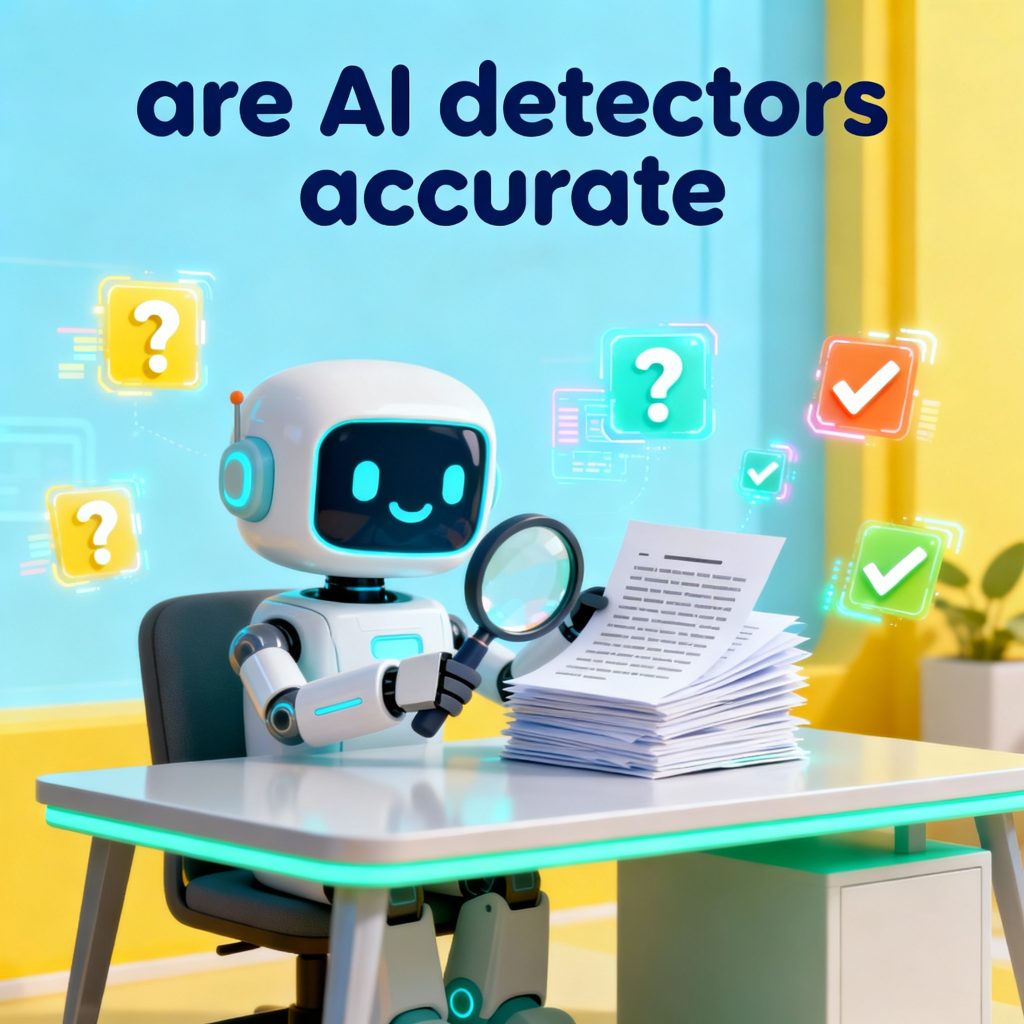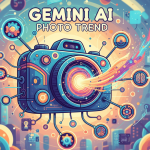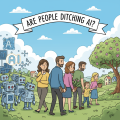Artificial intelligence is transforming how we create and consume information, but it has also sparked an important question: are AI detectors accurate enough to trust? From students submitting essays to businesses monitoring content authenticity, millions of people depend on tools that claim to identify AI-generated text. However, the reliability of these detectors remains a hot debate.
In this blog, we examine the real-world accuracy of AI detectors, their limitations, why false results occur, and what the future holds for detecting machine-generated content.
What Are AI Detectors?
AI detectors are software tools trained to identify whether a piece of content is human-written or generated by artificial intelligence models like GPT, Claude, or Gemini. These tools typically analyze:
-
Linguistic patterns (sentence length, style, structure)
-
Predictability metrics (perplexity and burstiness scores)
-
Repetitive or generic phrasing often found in AI outputs
-
Probability analysis comparing text to known human vs. machine datasets
They are widely used in education, journalism, publishing, marketing, and even in legal and government sectors where content authenticity matters.
Are AI Detectors Accurate?
The short answer: not always.
Most AI detection tools have reported accuracy levels between 60% and 85%, but this depends heavily on the text length, AI model used, and writing complexity. For example:
-
GPT-4 or fine-tuned AI systems can often bypass detectors.
-
Short text (under 200 words) tends to yield more false positives or false negatives.
-
Creative writing with high burstiness may be misclassified as human, even when AI-generated.
This inconsistency highlights a critical problem—too much trust in AI detectors can lead to costly mistakes, particularly in education and hiring where human livelihoods are at stake.
Why Do AI Detectors Fail?
1. Evolving AI Models
Modern AI models like GPT-4, Claude, or LLaMA use advanced algorithms that mimic human writing almost perfectly. Detectors trained on older datasets often can’t keep up.
2. False Positives and Negatives
A student writing in a structured academic style may be flagged as AI-generated (“false positive”), while an article written by AI but tweaked slightly by a human can slip through undetected (“false negative”).
3. Overreliance on Perplexity
Many detectors rely on perplexity scores (how predictable a word sequence is). But AI models can now introduce randomness, making perplexity-based detection weaker.
4. Limited Training Data
Detectors are often trained on a narrow dataset, leading them to misclassify content from diverse languages, writing styles, or cultures.
Which AI Detectors Claim High Accuracy?
While none are perfect, some commonly referenced detectors include:
-
OpenAI Text Classifier – pulled offline in 2023 due to low accuracy rates.
-
Turnitin AI Detection – widely adopted in universities, but flagged for false positives among non-native English writers.
-
GPTZero – popular among academics, claims high reliability on long-form text.
-
Writer.com Detector – tailored for business and corporate content integrity.
-
Sapling AI Detector – used in customer communication monitoring.
Even these, however, caution users not to rely on results as absolute proof.
Real-World Implications of Inaccurate AI Detectors
Education
Educators risk punishing students unfairly for “AI-assisted writing” when the content is genuinely original.
Journalism
False negatives in journalism can allow misinformation to spread unchecked.
Business & Marketing
Brands relying on AI detectors to ensure originality may end up distributing AI-written content unknowingly, risking credibility.
Legal and Ethical Issues
Flagging human work as AI-generated may lead to defamation or unfair disciplinary action.
The Future of AI Detection
Instead of binary “AI or human” detection, the industry is shifting toward traceability and watermarking. For instance:
-
AI Watermarking: Embedding invisible markers in generated text or images for verification.
-
Blockchain Content Verification: Attaching timestamps or ownership credentials to track origins.
-
Multi-layered AI Audits: Combining statistical analysis with contextual understanding for better outcomes.
This future approach may be more reliable than current standalone detectors.
How to Use AI Detectors Responsibly
-
Never rely on a single tool. Cross-check content across multiple detectors.
-
Use them as indicators, not evidence. They should guide investigation, not make final decisions.
-
Consider context. Writers with structured or repetitive styles may be misclassified.
-
Combine human review. Expert analysis is essential alongside AI detection.
Actionable Tips for Professionals
-
Software developers and data scientists: Focus on building hybrid AI-human review pipelines rather than fully automated policing.
-
Educators: Adopt flexible policies that focus more on assessing critical thinking than detecting “AI use.”
-
Businesses and marketers: Implement content authenticity checks but prioritize brand voice over strict AI exclusion.
-
Journalists and researchers: Use multi-source verification instead of sole reliance on AI detectors.
FAQs on AI Detector Accuracy
1. Are AI detectors accurate enough to use in schools?
AI detectors can be useful but are not foolproof. They should support teachers, not replace academic review.
2. Can AI detectors identify GPT-4 content?
Not consistently. GPT-4 often writes with more human-like variability, making detection harder.
3. Do AI detectors work on short text?
No, short-form text (like tweets or short answers) is highly unreliable to classify. Longer samples increase detection accuracy.
4. Can AI detectors give false positives?
Yes, especially when analyzing structured academic writing or content from non-native English speakers.
5. What is the best alternative to AI detectors?
Watermarking, blockchain-based verification, and human oversight remain stronger approaches for ensuring authenticity.
Conclusion
So, are AI detectors accurate? The evidence shows they are imperfect at best, misleading at worst. While they can provide indicators of AI authorship, they should never be seen as absolute proof. Professionals across industries must implement responsible practices, combining software tools with human judgment and new approaches like watermarking.
In a world where AI-generated content is growing rapidly, the real challenge is not just in detection but in rethinking how we value authenticity, creativity, and integrity in digital spaces.
Call to Action:
If your organization depends on originality and trust, don’t gamble with unreliable AI detectors. Instead, consult with AI strategy experts, adopt hybrid verification methods, and invest in responsible content governance today.





